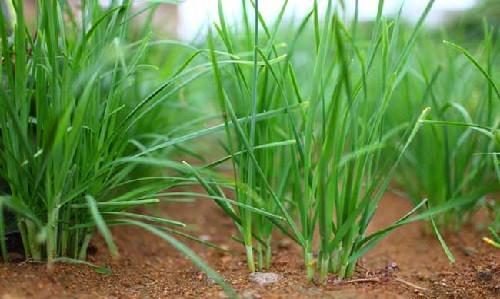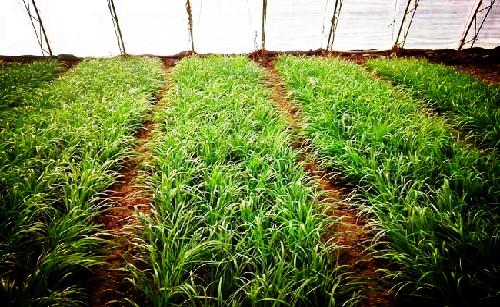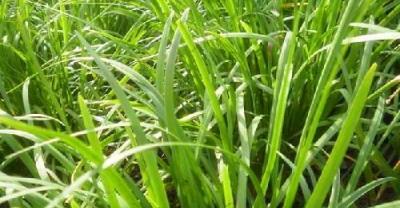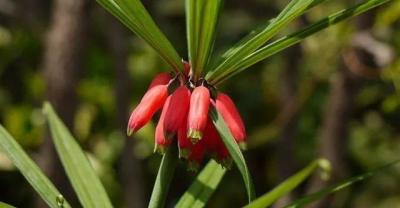The planting of leek has made a brilliant move again!
Leek, a perennial herb of the Liliaceae, is used in medicine with seeds and leaves. It has the effects of invigorating the stomach, invigorating and stopping sweating and astringent, tonifying the kidney and helping yang, solidifying essence and so on. In traditional Chinese medicine, leek has a very loud name called "aphrodisiac grass", and some people call leek "intestinal lavage grass". Not only that, but leek also has many names. Leek is also called grass milk, sunrise grass, long grass, also known as flat vegetables.

Soil preparation and fertilization
1. Land preparation. Before sowing, the soil is ploughed less than 20 cm, combined with fertilization, fine rake after ploughing, leveling to make the bed, where there are conditions, it can be cultivated in high ridges to facilitate drainage or flat cultivation.
2. Fertilization. Combined with soil preparation, 5000-6000 kg of high-quality mature organic fertilizer, 6 kg of urea, 10 kg of superphosphate or compound fertilizer converted according to this ratio should be applied per mu.
Sowing seeds
1. Sowing time. After the soil is thawed, the Autumn Equinox can sow seeds at any time, usually from late March to early May, suitable for sowing in spring and early rather than late in summer.
2. Sowing rate. It takes 4-5 kilograms per mu. Seedling transplanting in open field is 1.5-2kg.
3. Sowing method. Before sowing, first pick up a part of the soil on the surface of the border (sifted for sowing and cover the soil), then shallow hoe and hold flat, first irrigate the bottom water, about 3.3 cm deep, and then pour 3.3 cm deep water after the water seeps down. After the water seeps down, spread the seeds evenly, then cover the soil about 1.5 cm, and flatten it with a tooth rake the next day to keep the topsoil loose and moist, which is conducive to seed germination. After sowing, cover with plastic film to preserve soil moisture, after more than 30% of the seeds emerge, remove the plastic film in time to prevent burning seedlings, and find white lodging, it is necessary to add some moist soil.
Some also adopt the "dry sowing method". Dry sowing means that dry seeds without budding are directly seeded on the seedbed. Spread the seeds into a small shallow trench with a width of 10 cm and a depth of about 1.6 cm on the arranged seedbed, then gently sweep the ditch with a broom and compact it, then water it again, and water it again 2-3 days later. Keep the soil moist before and after the seeds are unearthed.

Colonization
1. Planting time. Spring sowing seedlings should be planted after the Summer Solstice, and summer sowing seedlings should be planted before and after Greater Heat. When planting, the high wet season should be staggered, so it is not conducive to slow seedling growth after planting.
2. Planting method. Raise the leek, cut the fibrous root (only 2-3 cm), and cut the leaf tip (10 cm long). Planting 7-10 seedlings per hole in the border according to row spacing 18-20 cm and hole spacing 10 cm, suitable for green leek; trenching according to row spacing 30-36 cm, ditch depth 16-20 cm, hole spacing 16 cm, planting 20-30 seedlings per hole, suitable for the production of softening leek, the cultivation depth is suitable to bury tiller nodes.
Field management
1. Temperature management. After the shed is sealed, keep 20-24 ℃ during the day and 12-14 ℃ at night. When the plant height is more than 10 cm, it should be kept at 16-20 ℃ during the day, and the temperature in the greenhouse should be kept cool and humid when the temperature exceeds 24 ℃. The heat preservation should be strengthened in small arch shed cultivation in winter, and it should be kept above 6 ℃ at night.
2. Fertilizer and water management. After planting, when new roots and new leaves appear, they can be topdressing and watering. 10-15 kg urea per mu should be applied with water. At the 4-leaf stage of seedlings, water should be controlled to prevent overgrowth, and mid-tillage and weeding should be strengthened. When tillering begins at the 6-leaf stage, the phenomenon of root jumping occurs (the rhizome of the tiller is in the upper part of the original rhizome), and sand mulching, soil pressing or ridge cultivation can be carried out to prevent the root system from exposing the soil surface. When the seedling is 20 cm high, stop topdressing and watering in preparation for harvest. After the beginning of harvest, each harvest, one fertilizer, after harvest, when the plant height reached 10 cm, combined with soil cultivation, the application of available nitrogen fertilizer, topdressing urea 8 kg per mu. When the weather turns cool, you should stop watering and pour frozen water once before freezing.

Pest control
1. Principle of prevention and control. In accordance with the policy of "prevention first, comprehensive control", we adhere to the principle of harmless prevention and control, which is dominated by agricultural control, physical control and biological control, supplemented by chemical control. Pesticides shall not be used with high toxicity, high residue and high grade three (teratogenic, carcinogenic, mutagenic) pesticides and their mixtures prohibited by the state.
2. Agricultural prevention and control. Strengthen ploughing and weeding, clean the countryside, strengthen fertilizer and water management, and improve stress resistance.
3. Physical control. Using sugar, wine, vinegar, water and 90% trichlorfon crystals to trap and kill adults, sugar, wine, vinegar, water and 90% trichlorfon crystals are made into a solution in the proportion of 3-1-10-0. 5, 1-3 boxes per mu, added at any time, keep dry, trap and kill all kinds of flies.
- Prev

How to raise wisteria? How do you plant it?
Temperature: like warmth, the most suitable temperature for growth is 20-301C. The cold tolerance is strong, and the low temperature of-8TC can be tolerated in winter. Potted plants can be planted in the open field in the Yangtze River basin.
- Next

Planting old sayings, you know?
To plow, to see dead soil, to rake, to see slopping soil, and to see wet soil. Ploughing an inch deep is equal to the upper layer of dung. Farming without dung is tantamount to fooling around. Medium well, ten.
Related
- Fuxing push coffee new agricultural production and marketing class: lack of small-scale processing plants
- Jujube rice field leisure farm deep ploughing Yilan for five years to create a space for organic food and play
- Nongyu Farm-A trial of organic papaya for brave women with advanced technology
- Four points for attention in the prevention and control of diseases and insect pests of edible fungi
- How to add nutrient solution to Edible Fungi
- Is there any good way to control edible fungus mites?
- Open Inoculation Technology of Edible Fungi
- Is there any clever way to use fertilizer for edible fungus in winter?
- What agents are used to kill the pathogens of edible fungi in the mushroom shed?
- Rapid drying of Edible Fungi

